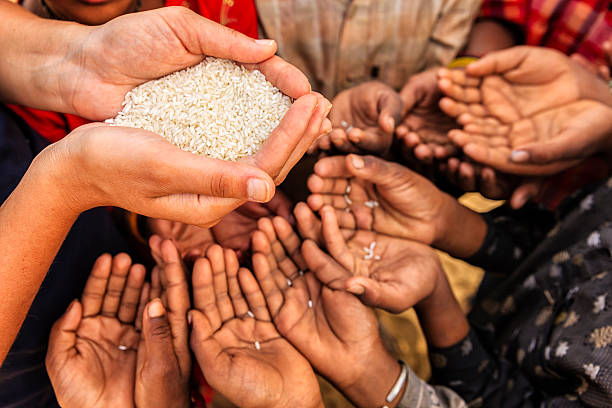If aliens came from another galaxy and studied human civilization starting with the United States, philanthropy would surely confuse them. On the one hand, based on what people say and do, they would conclude that our species is very protective of its money and its time. Accumulating, saving, and preserving these resources is clearly a priority. On the other hand, Americans turn around and freely donate about $500 billion to charities each year, and complement that with volunteering some 9 trillion hours of their time to support those organizations. This apparent contradiction appears, to varying degrees, in many cultures around the world.
Perhaps they would resolve this conundrum by concluding that Americans are both an industrious anda generous people. They accumulate time and money to first meet their own needs, and then to improve the society around them. A variety of laws encourage and incentive this generous behavior, which Indian-Americans have increasingly adapted and adopted. Indeed, according to a recent survey, the Indian diaspora in the United States spends 220 hours volunteering per year, nearly double the national average.
I have come to believe that Indian-Americans can, through the example of their giving of time and money to nonprofits, shape the next phase of Indian philanthropy and how it catalyzes social change. I further believe that Indian-Americans are the sleeping giant of American philanthropy, and that Indians are the sleeping giant of global philanthropy. Consider this: if Indian-Americans contributed double the national average in donations, as they already do in volunteer hours, it would translate into around $3.5 billion in additional funding for nonprofits every year, or about $300 million per month. Think about what would happen if the hundreds of millions of middle class, upper middle class, and wealthy Indians embraced philanthropy to this degree.
But it is important to note here that while American philanthropy is vast in scope and mature (in that it has been supported and practiced for hundreds of years), it is far from perfect. Likewise, India has its own proud philanthropic traditions, whether inspired by Gandhian service ideals or other calls to advance the common good that are found in the major religions practiced in India.
Nonetheless, let’s consider how the example of Indian-American donors could inspire a tsunami of giving in India by influencing the who, what, where, when and why of charitable donations.
Who Gives
There is a tendency among people born in India to believe that funding social change and societal improvements is primarily if not exclusively the responsibility of government and the super-rich. Inspired by Indian-American generosity that increasingly cuts across social classes, we can start to imagine a future where the vast middle and upper middle classes of India begin contributing 2% of their pre-tax incomes to charity, as has been the norm in the United States for decades. Donations from those 80 million households at that rate would generate around $40 billion for nonprofits annually. It would also inspire new laws and cultural norms to incentivize positive engagement with nonprofits. Over time, former beneficiaries of philanthropy can become donors themselves, as is the case with many of the young professionals who have received scholarships from the Foundation for Excellence to pursue higher education.
What is Given
When people and companies initially get involved in philanthropy, there is often a tendency to give surplus goods, like used clothing and furniture, or to contribute ones time doing low value added activities—such as painting a school classroom—that are more team-building and performative in nature than focused on social change. While in-kind donations can sometimes be appropriate and even life-saving, more often than not they don’t fit the precise needs of vulnerable populations and ecosystems.
A new generation of Indian donors and volunteers can follow the lead of leading Indian-American donors by emphasizing unrestricted cash donations; likewise, nonprofits can work harder to match volunteers’ skills with work that needs to be done, in order to ensure greater value addition and satisfaction.
Where Giving Happens
Today, most giving in India is local. People give to nonprofits operating in their community, and companies donate to groups that are visible to their customers, employees and shareholders. Oftentimes, this proximity bias ensures that regions that are already ahead of the curve are flush with philanthropic resources and those that are less prosperous fall farther behind.
In the United States, there is a longstanding tradition to fund national and international organizations that concentrate funds where the need is greatest. Indian-Americans contribute to this by sending a significant portion of their donations to India, far from where they work and live. If Indian people and companies who give were to adopt this approach, one might see charitable work flourish to a much greater extent in states and districts that need it the most.
Giving When
Especially in funding that comes in the form of CSR grants, the time horizons tends to be short-term. Often it is one year or less. Social change rarely happens in such limited windows of time. Increasingly, Indian-American donors are providing multi-year funding and endowment grants that can be used over the many years it often takes to bring about real change. Long-term giving is not the sole preserve of wealthy people and companies. Monthly giving from people of modest means provides a predictable income stream for many U.S. nonprofits, and it can do the same for ones operating in India.
Why Give?
Perhaps this is the most important shift that could occur. For many new givers, the act of donating is rather transactional and involves the question, “How does this gift benefit me?” But increasingly among Indian-Americans, there is a recognition that giving can be transformational for both the recipient and the donor. Giving joyfully is in fact one of the themes of India Giving Day, a new tradition that started in 2023 and that led to more than $5.5 million being donated to 33 nonprofits in March 2024. People are also recognizing the powerful side benefits of being a generous donor.
As Raj Gupta and Deepak Raj, two leading businessmen and philanthropists in the U.S., wrote on the Indiaspora blog, “Research shows that people who give the most to charities are, on average, happier, healthier, and more successful than those who give less, or not at all.” In the end, mandates to give, such as those in India’s world-renowned CSR law, can be powerful motivators for transactional donations. But incentives and encouragement, rather than requirements,are better at gradually growing the innate desire to solve problems through charitable activity.
I believe that due to a variety of trends and influences, including from the Indian disaspora and its growing culture of giving, Indian professionals and entrepreneurs who are today in their 30s and 40s will look back on their lives 50 years from now differently than their parents and grandparents did. They will reflect with justifiable pride not just on the families they raised and the wealth they accumulated, but also on the social, economic, and environmental problems they devoted time and money to helping solve through partnering with an increasingly professionalized and effective Indian nonprofit sector.
Views of the author are personal and do not necessarily represent the website’s views.
Alex Counts is the Executive Director of the India Philanthropy Alliance, the author of four books including ‘Changing the World Without Losing Your Mind: Leadership Lessons from Three Decades of Social Entrepreneurship’; an independent consultant to mission-driven organizations. He is also an adjunct professor at the Johns Hopkins University’s School of Advanced International Studies. Previously, he established Grameen Foundation in 1997 with the support of Nobel Peace Prize laureate Professor Muhammad Yunus and was its CEO for 18 years. He also served as the President and CEO of the American India Foundation.



